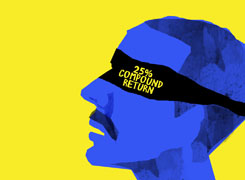35-Year-Old Private Employee Seeks Advice on Long-Term SIP Investment Strategy
Ramalingam Kalirajan |9854 Answers |Ask -Follow
Mutual Funds, Financial Planning Expert - Answered on Nov 21, 2024
He has an MBA in finance from the University of Madras and is a certified financial planner.
He is the director and chief financial planner at Holistic Investment, a Chennai-based firm that offers financial planning and wealth management advice.... more

Hi I am 35 year old private company salaried employee and I have recently started doing Sip for rupees 5000 per month diving it into 3 mutual funds Quant Elss tax saver fund growth for 2000, Mahindra Manulife Midcap fund growth 1500 and Kotak manufacturer in india growth 1500. Are the mutual funds I have invested Good to go for long term that is for 10years? Also should I do change any of it or add any more additional MF's to increase my portfolio?
Strengths of Your Current Investments
ELSS Investment (Rs. 2,000): Offers dual benefits of tax saving and wealth creation.
Midcap Fund Allocation (Rs. 1,500): Potential for higher returns in the long term.
Focused Thematic Fund (Rs. 1,500): A unique choice aligned with sectoral growth opportunities.
These funds indicate you have chosen a mix of diversification and tax benefits.
Areas That Need Attention
1. Overconcentration in Specific Funds
Sectoral and midcap funds can be volatile.
High concentration in such funds may impact stability.
2. Insufficient Diversification
You lack exposure to large-cap funds.
A balanced portfolio should include all market capitalisations.
3. Low Overall Investment
Rs. 5,000 is a modest start but may not meet long-term goals.
A higher SIP contribution ensures better corpus growth.
4. Tax Saving Strategy
Over-dependence on one ELSS fund limits diversification.
Consider adding another ELSS fund with a different investment style.
5. Lack of Hybrid or Balanced Funds
You do not have funds that offer stability during market downturns.
Recommendations to Improve Your Portfolio
1. Diversify Across Market Capitalisations
Add a large-cap mutual fund to ensure steady growth.
Large-caps offer consistency and lower risk over time.
2. Include a Balanced Hybrid Fund
Balanced funds provide stability by investing in equity and debt.
They reduce volatility while offering decent returns.
3. Increase Your SIP Contribution
Gradually raise your SIP to Rs. 10,000 per month.
This will align better with your long-term goals.
4. Add Another ELSS Fund
Diversify within ELSS to maximise tax-saving opportunities.
Choose funds with different strategies for better portfolio balance.
5. Avoid Thematic Overexposure
Sector-specific funds are high-risk.
Allocate only a small percentage of your portfolio here.
6. Consult a Certified Financial Planner
A professional can guide fund selection and portfolio alignment.
Choose regular funds through an MFD to benefit from professional support.
Importance of Active Fund Management
Actively managed funds often outperform passive funds like ETFs.
Fund managers adjust portfolios based on market conditions.
Active funds provide higher returns over the long term compared to index funds.
Additional Steps for Holistic Financial Growth
1. Set Financial Goals
Define goals like retirement, children’s education, or a house.
Assign investments to each goal for better planning.
2. Increase Emergency Fund
Save 6-12 months’ expenses in liquid funds or FDs.
This protects against unexpected financial crises.
3. Secure Insurance Coverage
Purchase term insurance with Rs. 1 crore coverage.
Health insurance should have Rs. 15 lakh coverage for comprehensive security.
4. Regular Portfolio Reviews
Evaluate fund performance every 6-12 months.
Replace underperforming funds after consulting an expert.
5. Tax Efficiency
Continue investing in ELSS to maximise Section 80C benefits.
Claim tax deductions under Section 80D for health insurance premiums.
Final Insights
Your current investments are a good start, but diversification is needed. Add large-cap and hybrid funds for balance. Increase your SIP gradually to align with your financial goals. Regular reviews and professional advice will ensure optimal returns.
Best Regards,
K. Ramalingam, MBA, CFP,
Chief Financial Planner,
www.holisticinvestment.in
https://www.youtube.com/@HolisticInvestment
Best Regards,
K. Ramalingam, MBA, CFP,
Chief Financial Planner,
www.holisticinvestment.in
https://www.youtube.com/@HolisticInvestment
You may like to see similar questions and answers below
Ramalingam Kalirajan |9854 Answers |Ask -Follow
Mutual Funds, Financial Planning Expert - Answered on Apr 30, 2024
Ramalingam Kalirajan |9854 Answers |Ask -Follow
Mutual Funds, Financial Planning Expert - Answered on Apr 12, 2024
Ramalingam Kalirajan |9854 Answers |Ask -Follow
Mutual Funds, Financial Planning Expert - Answered on May 02, 2024
Ramalingam Kalirajan |9854 Answers |Ask -Follow
Mutual Funds, Financial Planning Expert - Answered on Sep 13, 2024
Ramalingam Kalirajan |9854 Answers |Ask -Follow
Mutual Funds, Financial Planning Expert - Answered on Nov 04, 2024
Radheshyam Zanwar |5832 Answers |Ask -Follow
MHT-CET, IIT-JEE, NEET-UG Expert - Answered on Jul 26, 2025
Radheshyam Zanwar |5832 Answers |Ask -Follow
MHT-CET, IIT-JEE, NEET-UG Expert - Answered on Jul 26, 2025
Dr Deepa Suvarna |163 Answers |Ask -Follow
Paediatrician - Answered on Jul 26, 2025
Radheshyam Zanwar |5832 Answers |Ask -Follow
MHT-CET, IIT-JEE, NEET-UG Expert - Answered on Jul 26, 2025
Radheshyam Zanwar |5832 Answers |Ask -Follow
MHT-CET, IIT-JEE, NEET-UG Expert - Answered on Jul 26, 2025
Radheshyam Zanwar |5832 Answers |Ask -Follow
MHT-CET, IIT-JEE, NEET-UG Expert - Answered on Jul 26, 2025
Radheshyam Zanwar |5832 Answers |Ask -Follow
MHT-CET, IIT-JEE, NEET-UG Expert - Answered on Jul 26, 2025
Nayagam P P |9447 Answers |Ask -Follow
Career Counsellor - Answered on Jul 26, 2025
Nayagam P P |9447 Answers |Ask -Follow
Career Counsellor - Answered on Jul 26, 2025
Anu Krishna |1655 Answers |Ask -Follow
Relationships Expert, Mind Coach - Answered on Jul 26, 2025






















